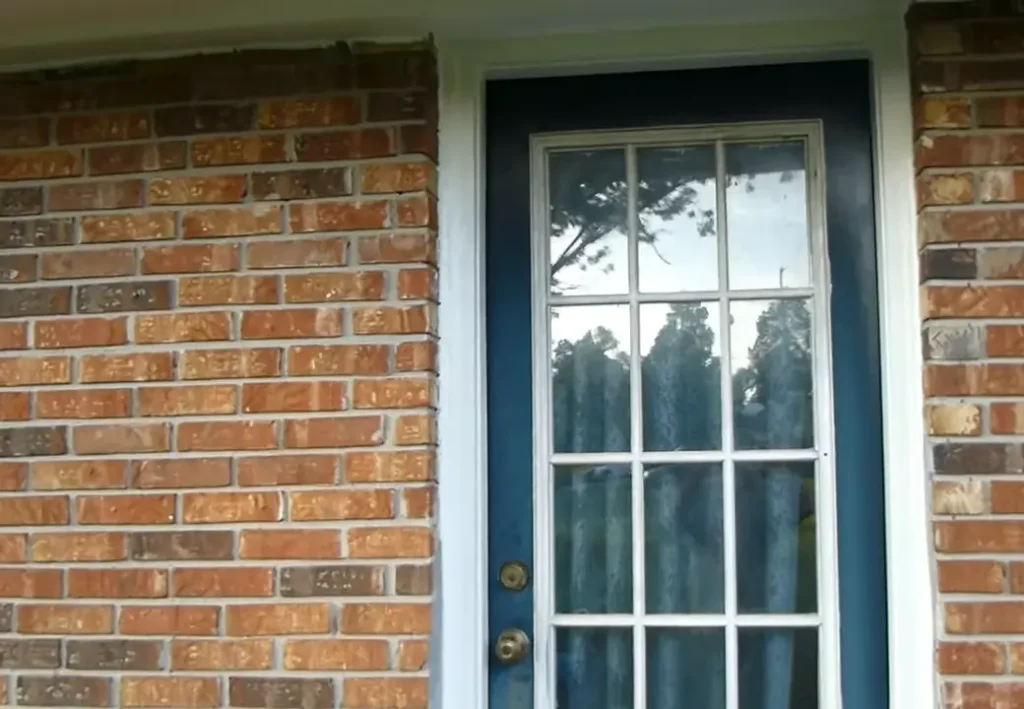What is Brick Mold on a Door? A Simple Explanation
Have you ever looked closely at the frame around your front door and noticed a piece of trim that stands out, both literally and figuratively? That’s called brick mold, and it plays a crucial role in your door’s installation and overall appearance.
Brick mold is the molding or trim that surrounds the outside of a door or window. It helps cover the gap between the frame of the door and the exterior wall, creating a smooth transition.
But why is it called brick mold? The term originates from its traditional use in homes with brick exteriors, where it was used to cover the gap between the brick and the door frame.
Nowadays, brick mold is used on various exteriors, not just brick, because of its functional and aesthetic benefits.
Brick mold gives a clean, finished look to your entryway and adds an extra layer of protection. It helps keep water, dirt, and pests from sneaking into the gaps around your door frame. So, it’s not just about looks—brick mold is also about practicality and longevity.
Materials Used in Brick Mold

Brick mold can be made from several different materials, each with its own pros and cons. Let’s take a look at the most common ones:
Wood
Wood is the traditional choice for brick mold and is still widely used today. It’s easy to work with, can be painted or stained to match your door, and has a classic, timeless look. However, wood requires regular maintenance to prevent rot, warping, and insect damage.
PVC
PVC, or polyvinyl chloride, is a popular modern alternative to wood. It’s durable, resistant to moisture and insects, and requires little maintenance. PVC brick mold is also easy to install and can be painted to match your home’s exterior. The downside? It can be more expensive than wood, and some people feel it lacks the natural look and feel of wood.
Composite Materials
Composite materials combine wood fibers with plastic resins to create a product that mimics the appearance of wood but has the durability of plastic. Composite brick mold is resistant to moisture, insects, and rot, making it a low-maintenance option. It’s also more environmentally friendly than PVC. However, like PVC, it can be pricier than wood.
When choosing the material for your brick mold, consider the climate you live in, your budget, and how much maintenance you’re willing to do. Each material has its own set of advantages and trade-offs.
Installing Brick Mold: A Step-by-Step Guide
Installing brick mold might sound daunting, but with the right tools and a bit of patience, it’s a doable DIY project. Here’s a step-by-step guide to help you through the process:
Tools and Materials You’ll Need
- Measuring tape
- Miter saw or hand saw
- Nail gun or hammer and nails
- Caulk and caulking gun
- Paint or stain (optional)
- Safety gear (gloves, safety glasses)
Preparation Steps
- Measure Twice, Cut Once: Measure the dimensions of your door frame and cut the brick mold pieces to size. Use a miter saw to make 45-degree angles at the corners for a clean fit.
- Dry Fit the Pieces: Before attaching anything, dry fit the pieces around your door to ensure they fit properly. Make any necessary adjustments.
- Prep the Surface: Clean the area around the door frame where the brick mold will be installed. Remove any old caulk or debris to ensure a smooth surface.
Installation Process
- Attach the Sides: Start with the side pieces. Position the brick mold against the door frame and use a nail gun or hammer and nails to secure it in place. Make sure it’s level and flush with the door frame.
- Attach the Top and Bottom: Next, attach the top piece, followed by the bottom piece if applicable. Use nails to secure them, making sure the corners align properly.
- Seal the Gaps: Use caulk to seal any gaps between the brick mold and the door frame. This helps prevent moisture and pests from getting in.
- Paint or Stain: If you’re using wood, you’ll want to paint or stain the brick mold to match your door and protect it from the elements. If you’re using PVC or composite, you can skip this step or paint it if desired.
Final Tips
- Take Your Time: Rushing can lead to mistakes. Take your time to ensure each piece is measured, cut, and installed correctly.
- Safety First: Wear safety gear when using power tools, and follow all safety instructions.
With these steps, you’ll have a beautifully installed brick mold that enhances your door’s appearance and provides essential protection.
Maintaining Your Brick Mold
Once your brick mold is installed, it’s important to take care of it to ensure it lasts for years to come. Here are some maintenance tips for different materials:
Wood
Wood brick mold requires the most maintenance.
Regularly inspect it for signs of rot, warping, or insect damage. If you find any issues, address them promptly to prevent further deterioration.
Repaint or restain the wood every few years to protect it from the elements.
PVC
PVC is low-maintenance, but it’s still a good idea to clean it occasionally to remove dirt and grime.
Simply use a mild soap and water solution and a soft brush. Avoid using abrasive cleaners, which can scratch the surface.
Composite Materials
Composite brick mold also requires minimal maintenance.
Like PVC, it should be cleaned periodically with a mild soap and water solution.
Inspect it for any damage, although this is less likely with composite materials.
Why Use Brick Mold? The Benefits
You might be wondering if brick mold is really necessary. Here are some compelling reasons to use it:
Aesthetic Appeal
Brick mold gives your door a finished, polished look. It frames the door, making it stand out and enhancing the overall curb appeal of your home.
Whether you choose wood, PVC, or composite, brick mold can be painted or stained to match your door and exterior, creating a cohesive look.
Protection
One of the main functions of brick mold is to protect the door frame. It covers the gap between the door frame and the exterior wall, preventing water, dirt, and pests from entering.
This added protection can significantly extend the life of your door and frame.
Durability
By adding an extra layer of material around your door, brick mold helps to absorb impacts and reduce wear and tear.
This is especially important in high-traffic areas or homes with kids and pets.
Versatility
Brick mold isn’t just for doors with brick exteriors. It can be used with a variety of exterior finishes, including siding, stucco, and stone.
This versatility makes it a great option for any home, regardless of its exterior.
Alternatives to Brick Mold
While brick mold is a popular choice, it’s not the only option. Here are some alternatives:
Flat Casing
The flat casing is a simple, straightforward trim that lies flat against the exterior wall.
It’s easy to install and gives a clean, modern look. However, it doesn’t provide the same level of protection as brick mold.
Beveled Casing
The beveled casing has a sloped edge that helps to shed water away from the door frame. It offers a bit more protection than flat casing and has a more decorative appearance.
No Trim
In some modern or minimalist designs, doors are installed without any exterior trim. This creates a sleek, seamless look but offers the least protection for the door frame. This option is best for areas with mild climates where moisture and pests are less of a concern.
Conclusion
Brick mold might seem like a small detail, but it plays a significant role in the appearance and durability of your door installation. Understanding what brick mold is, the materials it’s made from, and how to install and maintain it can help you make informed decisions for your home.
Whether you’re a seasoned DIY enthusiast or a homeowner looking to learn more about your property, knowing about brick mold can help you improve your home’s curb appeal and protect your investment. So next time you look at your front door, take a moment to appreciate the humble brick mold and all it does for your home.
Related Articles:

